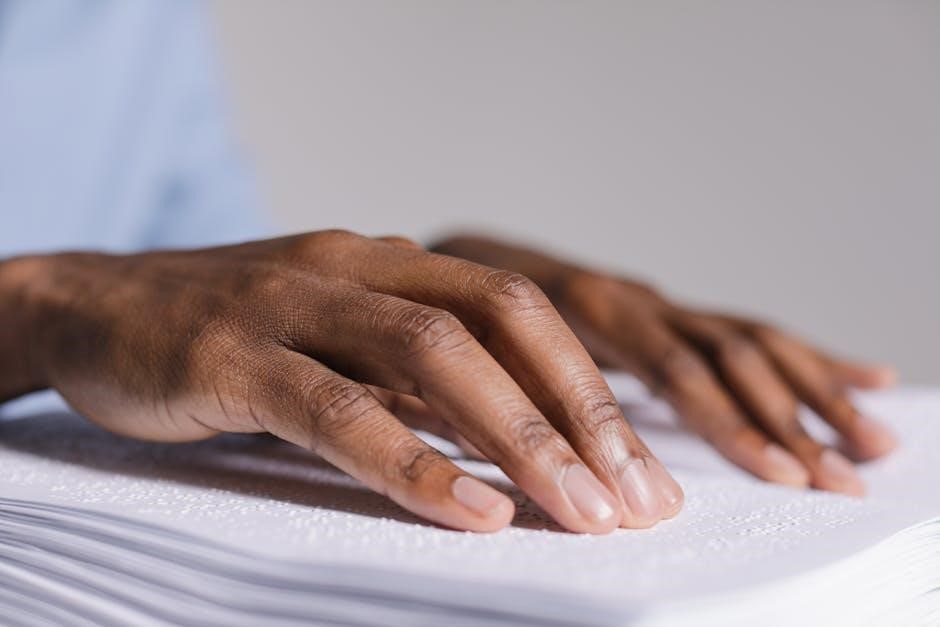specialized mtb size guide

Specialized’s MTB size guide helps riders find their perfect fit, considering frame sizes, body proportions, and riding styles. It ensures optimal comfort, efficiency, and performance on trails.
1.1 Evolution of Specialized Sizing
Specialized’s sizing system has evolved significantly over the years, moving from traditional height-based sizing to a more nuanced approach. The introduction of S-Sizing (S1-S6) marked a shift, focusing on rider proportions and riding style rather than just height. This system considers factors like leg-to-torso ratio, arm length, and standover height to ensure a better fit. Riders reported improved comfort and performance, especially with the adaptability of S-Sizing across different models. The evolution reflects a deeper understanding of rider needs, offering tailored solutions for trail, enduro, and downhill bikes. This approach has set a new standard in bike fitting, emphasizing geometry and personal proportions over one-size-fits-all methods.

Importance of Proper Fit
Proper fit enhances handling, efficiency, and overall ride enjoyment. A well-fitted bike ensures optimal performance, comfort, and control, making every trail experience more enjoyable and rewarding.
2.1 Why Proper Fit Matters
Proper fit is crucial for maximizing comfort, efficiency, and control while riding. A bike that fits well ensures optimal performance, reduces fatigue, and minimizes the risk of injury. Riders who prioritize proper fit often experience enhanced handling and better overall ride quality. Whether trail riding, enduro, or downhill, a well-fitted bike allows riders to maintain focus and enjoy the ride without discomfort. Specialized’s sizing system is designed to cater to various body proportions and riding styles, ensuring that each rider can find a bike that meets their specific needs. By investing time in finding the right fit, riders can unlock their full potential on the trails.
2.2 Differences Between Sizing Charts and Geometry Charts
Sizing charts provide a general frame size recommendation based on rider height, serving as a starting point for bike selection. Geometry charts, however, offer detailed measurements like reach, stack, and wheelbase, allowing riders to fine-tune their fit based on body proportions and riding style. While sizing charts are helpful for new riders, geometry charts are essential for experienced cyclists seeking optimal performance. Understanding both ensures a bike that not only fits but also performs well for specific disciplines, whether trail, enduro, or downhill. Proper fit enhances comfort, efficiency, and control, making it crucial to consider both charts when selecting a bike.

Specialized Sizing System Explained
Specialized’s sizing system uses S1-S6 frame sizes, focusing on reach, stack, and wheelbase to cater to different riding styles and body proportions for optimal fit and performance.

3.1 Overview of S1-S6 Frame Sizes

Specialized’s S1-S6 frame sizes are designed to cater to a wide range of riders, from smaller to taller individuals. Each size corresponds to specific measurements, including seat tube length, standover height, and reach. The system ensures that riders can find a bike that aligns with their body proportions, particularly leg-to-torso ratio, which is crucial for comfort and performance. For example, riders with shorter torsos may prefer smaller sizes for better handling, while those with longer torsos might opt for larger sizes. The S1-S6 range also considers arm length and reach, allowing for a more personalized fit. This approach helps riders achieve optimal ergonomics, whether they’re tackling technical trails or cruising on flat terrain. By focusing on these key metrics, Specialized’s sizing system aims to enhance ride quality and efficiency for all riders.
3.2 Seat Tube Length and Standover Height

Seat tube length and standover height are critical measurements in Specialized’s MTB sizing system. The seat tube length determines saddle height, ensuring proper leg extension and comfort. Standover height, measured from the ground to the top tube, indicates clearance and ease of dismounting. Both metrics are tailored across S1-S6 sizes to fit various rider heights and body proportions. For instance, taller riders benefit from longer seat tubes and higher standover heights, while shorter riders require shorter dimensions for optimal fit. These measurements ensure the bike feels balanced and accessible, whether on technical trails or casual rides. By aligning seat tube length and standover height with rider proportions, Specialized enhances comfort, control, and overall performance.

3.3 Reach, Stack, and Wheelbase in S-Sizing
Reach, stack, and wheelbase are key components of Specialized’s S-Sizing system, designed to optimize handling and rider comfort. Reach refers to the horizontal distance between the saddle and handlebars, influencing how stretched or upright the rider feels. Stack height, the vertical measurement from the bottom bracket to the top of the headset, affects the bike’s upright position and comfort. Wheelbase, the distance between the front and rear axles, impacts stability and maneuverability. Specialized tailors these measurements across S1-S6 sizes to suit different rider proportions and preferences. A longer reach and wheelbase enhance stability at high speeds, while a shorter stack height improves agility. These adjustments ensure the bike feels balanced, whether carving tight trails or descending technical terrain, catering to diverse riding styles and body types for a personalized fit.
How to Choose the Right Size
Start with height to determine a base size, then adjust for body proportions and riding style. Size down if between sizes for better handling and comfort.
4.1 Using Height to Determine Frame Size
Height is a primary factor in determining the appropriate frame size for a Specialized MTB. Riders typically start by matching their height to the recommended frame size range. For example, a taller rider may prefer a larger frame for stability, while a shorter rider might opt for a smaller frame for better control. However, height alone isn’t the only consideration, as body proportions, such as leg-to-torso ratio, also play a significant role. Specialized’s sizing charts provide a baseline, but adjustments may be needed based on individual proportions and riding style. For instance, a rider with longer legs may find a slightly smaller frame more comfortable. Always consult the specific model’s geometry chart and consider test riding if possible to ensure the best fit.
4.2 Adjusting for Body Proportions
Body proportions, such as leg-to-torso ratio and arm length, significantly influence bike fit. Riders with longer legs relative to their torso may prefer a smaller frame size for better control, while those with shorter legs may size up. Arm length also impacts reach, with longer arms often requiring a slightly larger frame. Specialized’s S-Sizing system accounts for these variations, offering tailored fit options. For example, a rider with a shorter torso but longer legs might opt for a smaller frame to maintain optimal reach and standover height. Adjustments can be fine-tuned with stem length and seat post positioning. Considering body proportions ensures a more personalized fit, enhancing comfort and performance on the trails.
4.3 Rule of Thumb: Size Down if Between Sizes
A common recommendation for Specialized MTB sizing is to size down if you’re between frame sizes. This approach ensures better handling and maneuverability, especially for trail and XC bikes. Riders who size down often find improved control and comfort, as the bike feels more responsive. For example, a rider measuring between S4 and S5 might opt for S4 for a more nimble feel. Adjustments like stem length and seat post height can fine-tune the fit. Many experienced riders, including pros, prefer smaller sizes for better performance. Sizing down is particularly beneficial for technical terrain, where a more compact frame enhances agility. However, for stability-focused riding, like enduro or downhill, sizing up may be preferable. Ultimately, sizing down between sizes is a proven strategy for optimal fit and ride quality.

Model-Specific Sizing Considerations
Specialized models like Stumpjumper, Enduro, and Downhill bikes require tailored sizing approaches to match riding styles and terrain demands, ensuring optimal performance and rider comfort.
5.1 Stumpjumper and Stumpjumper Evo
The Stumpjumper and Stumpjumper Evo models require careful sizing consideration due to their unique geometry and intended use. Riders often find that sizing down, especially for trail riding, enhances maneuverability and fun. For instance, a 6’1″ rider might opt for an S4 Evo for tighter trails, while an S5 could feel too long. The Evo’s adjustable geometry adds flexibility, allowing riders to fine-tune their setup. Body proportions, like leg-to-torso ratio, play a significant role in determining the ideal size. Test riding is highly recommended, as personal preference for handling characteristics can vary widely. The Stumpjumper Evo’s sizing is particularly sensitive to rider height and style, making it crucial to align the frame size with individual needs for optimal performance and comfort.
5.2 Enduro Models
Specialized Enduro models are designed for aggressive, high-speed riding, requiring precise sizing to balance stability and maneuverability. Riders often prefer larger sizes for Enduro bikes to maximize stability at speed, especially on technical descents. However, sizing down can enhance agility for tighter trails. The Enduro’s longer reach and wheelbase compared to trail bikes mean sizing choices are critical. Riders around 6’3″ often opt for the largest sizes, while shorter riders may size down for better control. Body proportions, such as leg-to-torso ratio, significantly impact fit. Test riding is essential, as personal preference for handling varies. The Enduro’s sizing is tailored to deliver optimal performance for its intended use, ensuring riders can tackle challenging terrain with confidence and precision;
5.3 Downhill and Freeride Models
Specialized Downhill and Freeride models prioritize stability and control at high speeds, requiring precise sizing for optimal performance. Taller riders often opt for larger sizes to maintain stability, while shorter riders may size down for better maneuverability. Standover height and body proportions, such as leg length, are critical for clearance and control. Riders with longer torsos may prefer slightly shorter reaches to avoid overreaching. Personal preference plays a significant role, as some riders prioritize agility over stability. Test riding is highly recommended to ensure the best fit. The sizing system for these models is designed to accommodate the demands of aggressive riding, ensuring riders can tackle challenging terrain with confidence and precision. Proper fit enhances both performance and safety in high-speed, technical descents.
Understanding Body Proportions
Body proportions, like leg-to-torso ratio and arm length, significantly impact bike fit. Riders with longer torsos may prefer shorter reaches, while those with longer legs benefit from higher standover clearance.
6.1 Leg-to-Torso Ratio
The leg-to-torso ratio plays a crucial role in determining bike fit. Riders with longer legs relative to their torso often prefer bikes with higher standover clearance, ensuring comfort and proper posture. Conversely, those with shorter legs and longer torsos may benefit from frames with shorter seat tubes to maintain optimal pedaling efficiency. This ratio directly influences how a rider interacts with the bike’s geometry, particularly in terms of reach and stack. A proper fit ensures that the rider can maintain control and comfort, whether climbing or descending. Specialized’s sizing system accounts for these proportions, offering frames that cater to diverse body types. By understanding and addressing the leg-to-torso ratio, riders can achieve a more personalized and efficient riding experience.
6.2 Arm Length vs. Reach
Arm length significantly impacts bike fit, particularly in determining the optimal reach. While leg-to-torso ratio is often prioritized, arm length plays a crucial role in achieving a comfortable riding position; Riders with longer arms may prefer a slightly longer reach to avoid feeling cramped, while shorter arms may benefit from a more compact cockpit. Specialized’s S-sizing system considers this by adjusting reach and stack measurements across frame sizes. Proper alignment of the arms with the handlebars ensures efficient control and reduces strain on the shoulders and neck. By balancing arm length with reach, riders can maintain an aerodynamic and comfortable position, enhancing overall performance and enjoyment on the trails. This tailored approach highlights the importance of considering individual body proportions in bike sizing.

Sizing for Different Riding Styles
Specialized tailors sizing for trail, enduro, and downhill bikes, ensuring optimal fit and performance for each riding style, from nimble trail bikes to stable, high-speed downhill models.
7.1 Trail and XC Bikes
For trail and XC bikes, sizing often prioritizes a balance between agility and comfort. Riders with shorter torsos may prefer smaller sizes for better handling, while taller riders benefit from larger frames. Body proportions, such as leg-to-torso ratio, play a significant role in determining the ideal fit. Some riders opt to size down for a more nimble feel, especially on tighter trails, while others prefer a slightly larger frame for stability at speed. Test riding is highly recommended to ensure the bike matches personal riding style and terrain demands. Adjustments like stem length and seatpost height can further fine-tune the fit, making trail and XC bikes versatile for a wide range of riders and conditions.
7.2 Enduro and All-Mountain Bikes

For Enduro and All-Mountain bikes, sizing focuses on balancing stability at high speeds with maneuverability on technical terrain. Riders often prefer a slightly longer reach and wheelbase for downhill confidence, while a lower standover height enhances clearance. Body proportions, such as leg-to-torso ratio, significantly influence size selection. Taller riders with shorter torsos may opt for larger sizes to maintain stability, while those with longer torsos might size down for better control. Specialized’s S-Sizing system allows riders to choose between a more agile or stable setup. Some riders prefer the largest size for maximum stability, while others size down for tighter trails. Adjustments like stem length and seatpost height can further refine the fit, ensuring optimal performance for both climbing and descending.
7.3 Downhill and Freeride Bikes
For Downhill and Freeride bikes, sizing prioritizes stability, control, and confidence at high speeds. Riders often opt for the largest size to maximize stability and handling on steep, technical descents. However, some prefer sizing down for better maneuverability in tight sections. Body proportions play a crucial role, with leg-to-torso ratio influencing standover height and reach. A longer torso may require a slightly shorter reach to maintain optimal control. Specialized’s S-Sizing system allows for precise adjustments, ensuring the bike feels balanced and responsive. Adjustments like stem length and seatpost height can further refine the fit. While some riders emphasize the importance of sizing up for downhill bikes, others find smaller sizes more manageable, highlighting the importance of test riding and personal preference in achieving the perfect setup.
Additional Resources and Tools
Specialized offers the Rider Sizing Station, online guides, and tools like “Find My Size” to help determine the perfect fit, ensuring optimal performance and comfort for all riders.
8.1 Specialized Rider Sizing Station
The Specialized Rider Sizing Station is an innovative tool designed to help riders find their ideal bike fit. It measures key dimensions such as saddle height, frame size, and overall bike compatibility. By using Retül fit data, the station provides personalized recommendations tailored to the rider’s body proportions and riding style. This ensures optimal comfort, efficiency, and performance on the bike. The tool is particularly useful for those unsure about their size or seeking a precise fit. It also helps riders understand how different frame sizes and geometries will feel before making a purchase. The Sizing Station is available at Specialized dealerships and offers a data-driven approach to finding the perfect bike. It’s a valuable resource for both new and experienced riders looking to enhance their cycling experience.
8.2 Online Sizing Guides and Tools
Specialized offers comprehensive online sizing guides and tools to help riders determine their ideal bike size. The “Find My Size” feature on product pages provides tailored recommendations based on height, riding style, and body proportions. Additionally, detailed fit charts and geometry breakdowns are available for each model, ensuring riders can make informed decisions. Online tools also incorporate Retül fit data, offering a data-driven approach to sizing. These resources are accessible from anywhere, making it easier for riders to find their perfect fit without visiting a store. While online tools are highly effective, they complement in-person fittings at Specialized dealerships. By leveraging these digital resources, riders can confidently select the right bike size, optimizing comfort, performance, and overall riding enjoyment.
The Specialized MTB size guide is an essential resource for riders seeking optimal fit and performance. By considering height, body proportions, and riding style, the guide helps riders choose the right bike size. The S-Sizing system, along with tools like the Rider Sizing Station, ensures a personalized fit. Whether trail, enduro, or downhill, Specialized’s approach prioritizes comfort and efficiency. While online tools provide valuable insights, test rides remain crucial for final decisions. Proper sizing enhances handling, speed, and overall enjoyment, making the guide indispensable for riders of all levels. Specialized’s commitment to tailored fit ensures every rider can maximize their potential on the trails.



Leave a Reply
You must be logged in to post a comment.